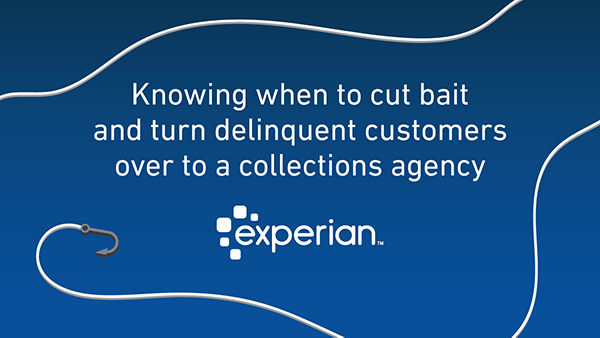
This weeks guest post is by Katie Keitch, VP of Commercial Services at InsideARM. InsideARM is a media company that specializes in training for credit management professionals. To receive future articles sign up to the InsideARM newsletter.
Oftentimes organizations miss out on higher bad debt recoveries. The number one reason this happens is that they hold on to the debt for too long.
It’s important in the onboarding process to start with the end in mind: setting yourself up for success by having mutually agreed payment terms, billing cycle, right party contact information, etc. However, even if you have done that all correctly from the start, some customers, unfortunately, aren’t able to pay for one reason or another. Here’s how to know when to cut bait and enlist the help of a 3rd party collections agency.
Don’t ignore the warning signs
Your customer isn’t paying within the agreed payment terms. Or maybe they were paying on time, but lately they have been pushing farther and farther out.
- Your customer is showing past due more often and/or farther past due than historically
- Your customer hasn’t paid you in the last 45+ days
- Your customer is 60+ day’s past due to their mutually agreed payment terms
- Your customer made broken promises to pay
- Your customer stopped taking your phone calls
- Your customer’s emails are suddenly not going through or the physical mailing address is returning mail to sender
Be proactive in your communication
Don’t be afraid to ask how things are going, especially if you noticed they are outside their normal payment cycle. Immediately offer alternative options instead of having to pay you the full past-due amount today. Set the expectation that it’s vitally important that they keep the communication lines open. If they have something come up, they need to call you. And always answer your calls. You have to be blunt and purposeful in your approach here so that they understand the commitment to you.
Offer some alternative options
While it’s so important that your customer takes your calls, it’s equally important to give them attainable goals. If they feel that they have options, they are more likely to keep the lines of communication open. Alternative options might include things like offering the ability to make a small weekly payment towards the balance.
Offer your customer the ability to continue doing business with you while making payments. The best way to accomplish this is to set the expectation they must remain current on the new invoices. Make the weekly payments smaller so they are able to keep to the commitment.
Your customer can always call you and make additional payments. However, it’s important that they stick to their original commitment. Ask your customer what is the dollar amount they can afford to pay weekly (hopefully automatically)? If the dollar amount is less than their normal spend, this is a sign that they can’t stay active as a customer. Give them the option to use alternative vendors until they can cover their average invoices plus the delinquent amount.
Your stakeholders in Sales may not be immediately supportive. but they will thank you in the long run. Especially if they have chargebacks or are commissioned on collected revenue. Last, in my experience, customers appreciate that you recognize and don’t want to see them get to a place of debt they can’t repay. The snowball effect of continuing to let a customer who can’t pay continue billing can be detrimental.
No one wins, if your customer files for bankruptcy or worse, go out of business.
Recommended exercise, review customers that haven’t made a payment to you in the last 45 days. These should be a top priority for collections.
Make your goal to be first in line not last
Don’t miss out on collecting because you waited too long to send an account. If you are working with a 3rd party collections agency, do you have an easy process for your collector to recognize it’s time to cut bait? Are the collectors being trained to recognize the warning signs and make quicker decisions? Don’t let your customers get into the 90 and 120-day buckets. They should already be with your third-party agency at that point. That is if you want an opportunity to recover the debt and fast. If you are using the steps outlined above, you should be seeing higher recoveries.
